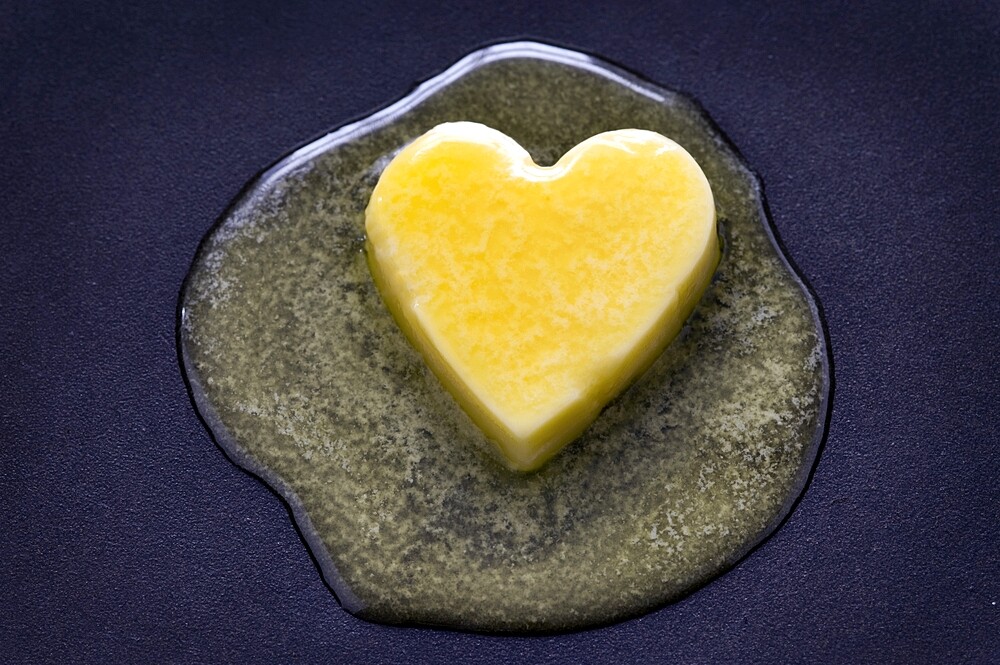Butter or margarine – which is the better spread? We will answer this question and have compiled the most important differences!
Which is better: butter or margarine? Some plead for the dairy product, others don’t let anything get on top of the vegetable fat. Both parties have sufficient reasons for this choice. For all those who are undecided, we summarise the most important advantages and disadvantages here.
How is butter made?
Butter is made from milk. It is milk fat. Cow’s, sheep’s and goat’s milk are particularly suitable for butter production. Sweet cream butter, for example, is made by using a centrifuge to separate raw milk into cream and skimmed milk. The cream is collected and matures further. It is then beaten in a machine, which separates the butter grain from the buttermilk. The fatty butter grain is kneaded and pressed in a further step: The rest of the buttermilk drains off, leaving the butter with a fat content of 82%.
Butter and the cholesterol level
For a relatively long time, butter had a reputation for containing harmful, saturated fatty acids and thus increasing blood cholesterol levels. However in new studies the negative effect of Cholesterin was weakened. Provided that not too much butter is consumed, it should even be harmless for healthy people. Nevertheless, one should make sure not to consume so many saturated fatty acids: These are found in meat, milk, cocoa butter, coconut oil and palm oil, among other things.
What is the advantage of butter?
Butter can score points with important nutrients: vitamins A, D, E and K as well as calcium. Another advantage of butter is its natural taste. With margarine, on the other hand, flavouring substances are added during production, which determine the taste.
What is margarine made of?
Margarine is an industrial product in which vegetable oils, water and fats have been processed. This requires emulsifiers that combine water and fat. In addition, salt, vitamins, acidifiers and beta-carotene are added for colouring.
Margarine and trans fatty acids?
In order to make vegetable oils spreadable, they have to be hardened in the manufacturing process. If the vegetable oils are partially hardened, trans fatty acids are produced which have a negative effect on the metabolism and increase the harmful LDL cholesterol in the blood. LDL cholesterol can cause the vessels to calcify. This in turn causes circulatory disorders, which can lead to cardiovascular diseases.
Is margarine harmful per se?
No! Because in the meantime there are new production processes that harden the vegetable oils completely during the production of margarine. No trans fatty acids are formed in the process. Margarine is therefore harmless in this respect. However, according to Stiftung Warentest, glycidyl ester has been detected in all margarine products containing saturated fatty acids, for example in the form of coconut or palm fat – even if only in very small quantities in some cases. Glycidyl ester is a fat pollutant that is produced during the refining of oils and can be potentially harmful to health.
What is the advantage of margarine?
Margarine is characterised by its fat composition: It contains more healthy unsaturated fatty acids, valuable omega-3 fatty acids and above all their combination with omega-6 fatty acids is considered positive. Margarine based on linseed, rape or sunflower oil is particularly valuable.
Mixed greases as a substitute?
Mixed fats that combine butter and oil are also becoming increasingly popular, thus combining the taste of butter with the consistency of margarine. The extent to which they have health advantages over pure products has not yet been clarified.
Conclusion
Butter and margarine both have many calories and both products have their own advantages and disadvantages. Margarine appears to be healthier due to its fatty acid composition, but it is an industrial product which, depending on its composition, may also contain harmful fat contaminants.
Whether butter or margarine is used to shorten the snack is therefore a matter of taste. The only important thing about both ingredients is that they are used sparingly, as they are fat.

